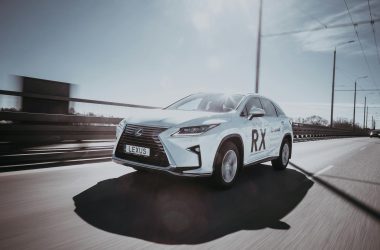Basics Of Hybrid/Electric Car Operation
HEV = Hybrid Electric Vehicle.
Contents
- Parallel Hybrid Vehicle (Example: Prius)
- Series Hybrid Vehicle
- PHEV (Plug in Hybrid Vehicle)
- EREV (Extended Range Electric Vehicle. Example: Chevy Volt)
- Vehicles with Start/Stop Systems
- Speed Controller (these enable you to accelerate and slow down the vehicle)
- Electric Vehicles
- – Cost of Electric Vehicle Maintenance
- – Battery Lifespan
- – Range Anxiety
- – Importance of Geographic Location
- – Financial
- – Efficiency Of Electric Vehicles
- – Cold Temperatures Affect Li-ion Batteries
- – Environmental Impact Of Electric Vehicles
- – Dependence on Foreign Oil
- – Power Sources
- – Electric Vehicle MPGe – How to convert EV Efficiency to MPG
- – Kinetic Energy Recovery
- – Electric Vehicle Charging Levels
- – Charging Infrastructure Issues
- Solar Powered Vehicles
- Turbo-electric Vehicles
- Nuclear Powered Automobiles
- Externally Powered Electric Vehicles
- MAGLEV (Magnetically Levitated Vehicles)
Parallel Hybrid Electric Vehicle
A parallel hybrid electric vehicle is one that is propelled jointly by one or more electric motors in addition to a combustion engine. In other words, both an electric motor and a combustion engine turn the wheels, but not always at the same time. The electric motor may be (and usually is) used to accelerate until the gas engine starts and then they both turn the wheels. Parallel hybrid vehicle batteries are charged like this:
The same combustion engine that turns the wheels turns the electric motor which then generates electricity to charge the batteries. When you are slowing the vehicle down, since the wheels are rolling while you are slowing down, they turn the electric motor, which then generates electricity that charges the batteries. This is called regenerative braking.
Series Hybrid Electric Vehicle
A series hybrid electric vehicle is one which is propelled exclusively by one or more electric motors, not a combustion engine, and a generator switches on to charge the batteries when they are low. One advantage of this setup is relatively high efficiency due to the fact that the generator (which is powered by a combustion engine) is operated at a constant speed which at which its efficiency is highest. Parallel hybrid vehicles can’t benefit from this because their combustion engine speed varies significantly, so it is operated at inefficient speeds much of the time.
How PHEVs Work (Plug in Hybrid Electric Vehicles)
A plug-in hybrid electric vehicle is one that is charged by plugging it in to a power outlet ranging from 110 volts to more than 400. A PHEV may be a parallel or series hybrid.
How EREV/REEV Cars Work (Extended Range Electric Vehicle/Range Extended Electric Vehicles)
An EREV/REEV is a battery-powered vehicle propelled by one or more electric motors and a backup generator starts when the battery pack’s state of charge is low. The generator does not necessarily charge the batteries. The Chevy Volt is an example of such a vehicle. Operating an EREV with a gas-powered generator directly without charging the batteries is inefficient (batteries are typically over 80% efficient, while generators are under 30%).
Vehicles Equipped with Electric Start/Stop Systems
These cars are traditional, except for the fact that the engine shuts off when it isn’t driving and an electric motor accelerates it when necessary, giving the engine time to start so that it can provide full power.
Hybrid and Electric Vehicle Speed Controllers
A device called a controller or speed controller controls the flow of electric current from the battery pack to the motor. Speed controllers don’t operate by increasing or decreasing electrical resistance, but they utilize PWM, or pulse width modulation.
The reason they don’t control the amount of current using electrical resistance is because the controller would waste far too much of the energy, and you cannot afford to waste much energy in an EV because the batteries already don’t provide enough to begin with.
Explanation 1: When you switch on a fan, notice that it takes a while to spin up to fill speed? What if you were to turn it off a millisecond after you turned it on? It wouldn’t get a chance to reach a high speed, therefore, you could need to give it more time to get to a higher speed by turning it off 10 milliseconds after turning it on instead of only 1 millisecond, and of course, if you leave it on for 4 whole seconds, then that is enough time for the fan to reach its full speed.
Like hybrid and electric vehicles, fans are powered by electric motors. Electric vehicles’ controllers switch the current on and off many times per second at a rate that is calculated based on how far you depressed the accelerator pedal.
Explanation 2: Pulse width modulation involves supplying pulses of electric current to the motor – Which is essentially supplying the motor with electric current very briefly, and then turning off the current, and repeating this many times per second. The longer the current being supplied to the motor is on, the motor turns faster, the sooner you turn off the current, the less time the motor has to accelerate. It never actually accelerates to its full speed unless you leave it on long enough.
So, when you want to accelerate, you supply the motor with current for a longer periods of time, and when you want to slow down, you supply the motor with current for shorter periods of time.
The width in pulse width modulation is how long the current is supplied to the motor. Modulation is adjusting the frequency at which this is done.
How Electric Vehicles (EVs) Work
A standard electric vehicle is one that is propelled by one or more electric motors which are powered by a bank or pack of batteries. Electric motors can be placed at each wheel, independently turning each of the four wheels(or more, eg: the Eliica has 8 wheels), or one electric motor can turn both front wheels or the back wheels.
An electric motor is a device which consists of one moving part which is turned by electromagnetic induction. An electric-drive vehicle (EV) is one which is powered by electricity, rather than fuel combustion, which powers conventional vehicles which use ICEs (Internal Combustion Engines). Electric vehicles are normally powered by conventional DC (direct current) or AC (alternating current) electric motors, while some locomotives are magnetically levitated (MAGLEV).
Advantages Of Electric Motors
Electric motors have an efficiency advantage over other types of motors, gasoline engines are 20-25% efficient, while electric car motors are 75-95% efficient (brushed motors usually have ratings in the 80s, and brushless in the 90s), meaning that they convert 75-95% of the electrical energy consumed into rotational mechanical energy.
If you want to build a DIY electric car, you have to choose the electric motor carefully. It has to be highly efficient (over 80%), because inefficient motors create the need for very large and expensive battery packs.
Electric vehicles’ motors do not idle, so they don’t waste much electricity when idle, mainly electronics, such as radios and air conditioning/heating systems.
Electric motors are smaller, often lighter, require little to no maintenance, and they produce more torque than gasoline powered engines.
While electric motors have their advantages over combustion engines, batteries have drawbacks which complicate the process of manufacturing affordable, lightweight, and high performance electric vehicles significantly. This is why electric vehicles are not common.
Standard brushed electric motors have two parts which malfunction regularly, but not frequently. These are called the brushes. Brushes are used to supply electricity to the commutator of an electric motor. Brushes can easily last 10 years, and sometimes more. Reliability has always been of paramount importance to vehicle owners, and reliability also affects the cost of ownership significantly.
Since electric motors can be much smaller than gasoline engines, their smaller size may make larger crumple zones possible, which is a safety advantage.
Electric motors do not require the following (although some of the following may still be used in some cases):
- Transmissions (these are sometimes used in electric vehicles).
- Cooling systems (electric vehicle battery packs may be liquid cooled).
- Oil changes (certain electric motors require this).
- Maintenance (some electric motors require lubrication).
- Firewalls.
- Gasoline/Diesel.
- Significantly less plumbing (except for the air conditioning, braking, battery cooling, and other systems).
- Exhaust.
- Pre-heating during the winter.
- Clutch.
- Starter.
- Air (which is more important to submarines).
The drawbacks of batteries (the bad side of electric vehicles)
- Low energy density/energy-to-weight ratio of 30-200 Watt-hours per kg (110 is more common for modern lithium-ion powered electric vehicles).
- Low power density/power-to-weight ratio of 180-7,000 Watts per kg (7,000 is much higher than average, 1,000-2,000 is more common)
- High cost per watt-hour of storage ranging from $0.26 per Wh for lead acid to $3 per Wh for expensive lithium-ion models, but normally $0.50 to $1 per watt-hour for lithium-ion.
Cost Of Electric Vehicle Maintenance
Electric vehicle maintenance is significantly different from gasoline powered vehicle maintenance, as they are constructed with different parts, and not only that, but the number of parts is also different. One example is that electric vehicles do not usually contain transmissions, but they do contain batteries. Batteries and transmissions are extremely costly to replace, and the price tags on transmissions are not as high as that of batteries. However, the labour cost of transmission replacement is high, due to the fact that transmission replacement is a much more complicated, lengthy, and strenuous process than battery replacement. There are exceptions to this rule in cases where the battery packs are placed in highly recessed areas.
Lifespan Of Electric Car Batteries
The average lifespan of electric vehicle batteries is five to ten years because they are normally powered by lithium iron phosphate batteries. This is due to the fact that electric vehicle batteries especially need to last as long as possible due to the high cost of replacement, unlike portable electronics which stop working after a couple or few years. Portable electronics utilize a different type of batteries that lasts only 4 years.
Electric Vehicle Range Anxiety
Range anxiety is the fear that your batteries may run out of energy before you reach your destination. This is one of multiple reasons why hybrid-electric vehicles are much more common than electric vehicles. One way to address range anxiety is to avoid unnecessary stops and acceleration, and also to slow down only if you are driving at least at a somewhat high speed. Most importantly, plan your trips carefully and determine the exact distance of wherever you are travelling and ensure that it is much shorter than your vehicle’s range. Peace of mind is important. Also ensure that you plug in your vehicle as soon as you park it in the garage so that it can charge overnight.
Characteristics Dependent On Geographic Location
Financial/Economical
The cost of gasoline, diesel and electricity vary widely with area. For example: The average electricity rate in the U.S is a low $0.10 USD/kWh but it is the equivalent of an extremely high $0.45 USD/kWh in Kingston, Jamaica (sometimes, it varies). This makes it much more expensive to charge an electric vehicle in Jamaica than in the U.S. Please visit the power consumption page by clicking the link to your left to learn more. In a country with particularly high gasoline prices, but low electricity prices, hybrid and electric vehicles would normally be more cost competitive with gasoline powered vehicles.
Efficiency Of Electric Vehicles
Hybrid and electric vehicles do not idle because the electric motor accelerates and gives the gas engine time to start, but a regular gas-powered car engine is on all the time until the driver shuts it off. The result of this is a significant city fuel economy difference between gas and hybrid/electric vehicles but a much less significant highway fuel economy difference, because cars drive continuously on the highway instead of burning gas without moving (idling).
Please visit the fuel economy page for more information. This means that people who live in countries with few highways (such as Jamaica), benefit from the fact that hybrid and electric cars don’t idle more than people in the United States would, since people in the United States drive on highways much more.
Cold Temperatures Affect Lithium-ion Batteries
Very cold temperatures decrease the power output of lithium-ion batteries, and decrease the range of electric vehicles unless the batteries are heated. One option is to heat the fluid that is normally circulated through the battery bank and into the radiator so that it heats the batteries instead of cooling them. The radiator fan (if any) would have to be turned off, of course. It would be better if the radiator was automatically bypassed during the winter, though.
Environmental Impact Of Electric Vehicles
This section pertains to the environmental impact of electric vehicles which is totally dependent on location and the power source of the vehicle.
Electric vehicle emissions are generally lower than that of gasoline powered vehicles for the following reasons:
- Coal power plants are more efficient than gasoline-powered vehicles. They are between 30% and 40% efficient. Since power transmission line losses are approximately 7%. Even if electric vehicles used coal exclusively, they would still cause less emissions than gasoline powered cars, according to a Stanford study.
- Electric motors are 3-4 times more efficient than gasoline engines (75% and upwards while gas engines are about 20-25%).
- A large percentage of electricity comes from sources which are cleaner than gasoline, such as natural gas, and nuclear plants. The rest of it comes from coal, biomass, solar, wind, hydroelectric, and geothermal power plants.
Please note that another reason emissions will vary widely depending on the source of electricity is because of the inability (or lack of capability) of some power plants, such as coal and nuclear power plants to load-follow when necessary, as in, their inability to be adjusted to meet electricity demand. Their power output is fairly constant. If your electric vehicle is charged, the generators at the power plant are not going to turn themselves up to meet the requirements of your battery charger, but the amount of power available will be used to charge it.
If push comes to shove, and power plants cannot meet demand, they will eventually have to expand their facilities and purchase more generators or upgrade existing ones, either that, or use peaking generators such as gas engines. This means that a major increase in the use of electricity to charge electric vehicles during the day would certainly result in the need for more power plants, electricity demand is higher in the day, than it is at night, so, it is better to charge vehicles overnight.
MIT: The Future of Coal In a Greenhouse-gas Constrained World
Dependence On Foreign Oil
The petroleum used in the United States is used for transportation, apart from the 15% of electricity which comes from petroleum powered plants (2009). Electric vehicles could decrease dependence on foreign oil significantly, because most of the fuel used to generate the electricity which powers them comes from domestic sources especially natural gas and coal. Some countries, however, heavily depend on petroleum fired electricity generators. Check the department of energy for more information on the sources of electricity. Even if all electricity was produced using petroleum, electric vehicles still are significantly more efficient, therefore, they result in less petroleum consumption.
Power Sources
Electric vehicles can be powered by a wide variety of power sources (clean or not), such as batteries, fuel cells, and batteries can be charged with wind power, solar power, hydroelectric power, geothermal power,generators powered by biofuels, coal, diesel, gasoline, and others. This is one of the most important benefits of electric vehicles.
The source of electricity for electric vehicles, in many cases, is more environmentally friendly than gasoline. In countries like Sweden, Norway, and Iceland, which burn no fossil fuels to generate electricity, EV usage results in minimal emissions, except in cases where they import a significant amount of electricity from fossil fuel burning power plants in other countries.
Electric Vehicle MPGe
Both gasoline and batteries contain a certain amount of energy per kg of their mass. They store different types of energy, but they can still be measured using the same Wh (watt-hour) unit. Lithium-ion batteries usually contain 100 Wh per kg, and gasoline 12,900 Wh per kg. 1 Wh of gasoline has a mass and weight of 0.00007751937 kilograms.
Therefore, 100 Wh of gasoline has a weight of 0.007751937 kg, and stores the same amount of energy as 1 kg of li-ion batteries.
Weight of gasoline: 1 gallon of gasoline weighs 6.3 pounds. 1 kilogram = 2.20462262 pounds, therefore, 6.3 pounds, or one gallon of gasoline has a weight of 2.85 kg (6.3 / 2.20462262). In order to determine how many Wh a gallon of gasoline contains, multiply the weight of a gallon of gasoline which is 2.85 kg by the number of Wh a kg of gasoline contain:. 2.85 kg x 12,900 Wh.
Therefore, 1 gallon of gasoline contains 36,765 Wh, or 36.7 kWh of energy.
Finally, to determine the MPG equivalent of electric vehicles, you would divide 1 by the electric vehicles efficiency which is measured in Wh/mile to determine the miles per Wh figure.
1 / 333 Wh per mile = 0.003003003 miles per Wh. Multiply that miles per Wh figure by 36,765 Wh a gallon of gasoline contains, and the result is 110 MPG.
Further Reading
Comparing Energy Costs Per Mile for Electric and Gasoline Powered Vehicles
Tailpipe smog emissions vs Power Station Emissions
There is one important difference between the smog emissions at power stations caused by electric vehicles, and the tailpipe smog emissions of gasoline powered vehicles. Smog is inhaled by pedestrians and especially cyclists as they are in close proximity to passing gasoline and diesel-powered vehicles. Electric vehicle tailpipe emissions are equal to zero. This is especially important to people living in large and congested cities.
Kinetic Energy Recovery
Regenerative braking is a form of kinetic energy recovery, meaning that when you are braking your electric or hybrid electric vehicle, it will use the kinetic energy (energy that it possesses due to its motion) that it possesses due to its inertia (resistance to a change in velocity) to turn the electric motor which will generate electricity and recharge the batteries. This is possible because electric motors share many of the characteristics of alternators/dynamos (AC and DC generators respectively).
A KERS (Kinetic Energy Recovery System) is one which is used to convert the kinetic energy that a vehicle (often a race car) possesses due to its motion into electrical energy so that it can be later used to provide a power boost.
Amount Of Kinetic Energy Recoverable
For a while I and other people have been wondering how much energy is recovered by regenerative braking systems. This varies significantly with a vehicle’s velocity, motor/generator efficiency, as well as the weight of the vehicle. I have found an example of a regenerative braking system and some details will be shown below in the future. Click the Modec Tour link below to learn more.
Cambridge University: Modec Tour
How Regenerative Braking Works
Electric Vehicle Charging Levels
I would recommend reading the “Understanding Power Consumption” section first.
There are three electric vehicle charging levels.
Level 1 is the slowest and is done using a 120 volt AC power outlet with up to 16 amps of current. It is the slowest because 120 volt power outlets don’t provide enough power to any faster. The 120 volt outlets mentioned above that can provide 16 amps provide 1,920 watts (1.92 kW) of power. To determine power, just multiply voltage by the number of amps.
Level 2 is faster because it is done using more powerful, 240 AC volt power outlets that provide up to 80 amps of current. 240 volts * 80 amps = 19,200 watts (19.2 kW).
Level 3 will be the fastest and has not been finalized, but it is actually DC.
[Source]
Electric Vehicle Charging Infrastructure Issues
Battery powered electric vehicles (not hybrid) have to be charged with electricity, therefore if they are to be charged anywhere away from home, and acceptably quickly, they need a charging station for that. Charging stations are still uncommon in most places and the lack of them contributes to what is known as ‘range anxiety’.
Plug-in hybrid vehicles are likely to be the successors of conventional hybrids. This is due to the fact that it is cheaper to charge hybrid cars with electricity (in most cases) than it is to rely on a built-in gasoline or diesel-powered generator.
Built-in gasoline and diesel-powered generators play the important role of ensuring that hybrid vehicle drivers can get to their destination if it happens to be unusually far. This enables them to drive long distances if necessary, but at a higher cost if they exceed their electric range.
Using charging stations, electric vehicles still take hours to charge in most cases, and people will not want to sit at a charging station in public for hours. EV users are better off charging at home overnight and keeping each trip below the driving range of their vehicles. Charge times have been improving. Prototype technology charges in as little as 20 seconds, but battery technology on the market today can charge in 45 minutes or even 15 minutes, and they are continuing to improve.
The 20 second charge time was achieved by lowering the internal resistance of lithium-ion batteries so that lithium ions can travel from the anode to the cathode and back faster. This technology may not be commercialized for now, however, EVs that can charge in only 20 minutes are already on the market (i.e. The Tesla Model S).
Charging stations could be constructed everywhere to make it easier for early adopters of electric vehicles to charge wherever they wanted to, but they cost thousands of dollars, and therefore everyone is hesitant to spend money on them. They want a quick return on investment. In other words, people need to pay to use those charging stations so that the money spent on them can be recuperated.
To be fair, EV charging stations are cheap compared to gas stations at a mere $800-$4,000. EV charging stations are already in virtually every U.S. state, and manufacturers such as Tesla have been setting them up en masse.
Manufacturers construct electric vehicles with a driving range longer than that of the average commute in most locations. This is to enable most people to commute without having to charge in public. A problem with this approach is that longer range electric vehicles are much more expensive, and if they could charge quickly enough, then less batteries could be used because people could simply plug in somewhere (provided that there is a charging station). Less batteries cost less money.
That information above shed light on an interesting fact that fast charging vehicles have an economic advantage over the others because if people can charge quickly, then they can drive a vehicle with a much shorter range and simply charge when they need to.
Chargers: Electric vehicle chargers do add some weight and cost to electric vehicles which currently have to carry them on board. There is the possibility of DC charging stations that have a universal charger built in so the vehicles don’t have to carry the weight of the charger around, and manufacturers could cut the cost of the vehicle by omitting the charger from it.
Solar-Powered Vehicles
Solar-powered vehicles could either be electric cars that are recharged using housetop solar panels, or electric vehicles with solar panels fitted to their bodies to recharge them along the way.
One nice feature of theirs is incredibly long range. Some solar-powered vehicles (especially the smaller ones) can drive as long as the sun is out. This could be helpful, as some power grids are overstressed and need upgrades which are impending, but overdue. Solar cells are being produced more cost-effectively as time passes, and that trend will continue until they become much more affordable, which will result in increased domestic solar panel use, which reduces strain on the power grid.
Grid power comes from unclean as well as increasingly clean sources of energy, such as fossil fuels, solar panels, wind turbines, and others, which means that electric vehicles will be charged with increasingly clean sources of power as the grid becomes greener.
How Turbo-Electric Vehicles Work
An uncommon (at least for the average consumer) category of propulsion systems is turbo-electric, meaning that an electricity generator is used to supply electricity to one or more electric motors which convert that into mechanical energy, which is used to turn wheels or propellers.
The electricity generators can be powered by nuclear reactors, gasoline, diesel, fuel cells, and more.
One application of nuclear turbo-electric propulsion systems is submarines. Nuclear reactors generate significant amounts of heat, which is used to heat a boiler, which produces steam, which passes through a steam turbine at a high pressure. The steam turbine would turn an alternator or dynamo (direct current generator), which would supply electricity to one or more electric motors, which would then turn propellers.
How Nuclear Powered Cars Work
Nuclear powered automobiles are vehicles which use a nuclear reactor to produce heat. That heat is used to boil water or another fluid, expanding it into steam, and that steam is used to move the pistons in a steam engine or turn the blades of a steam turbine.
Electric: The steam turbine could then be used to generate electricity which would charge a bank of batteries or supercapacitors which would supply the necessary electricity to the electric drive motor.
Direct-drive: The steam turbine could be used to turn the wheels directly, like the Ford Nucleon.
One of the main advantages is an extremely long driving range without refueling. Nuclear powered vehicles are not likely to become mainstream due to unresolvable safety issues. Vehicles will crash, and that can result in devastating explosions and radiation emissions. It is difficult to protect a nuclear reactor in a car. Selling nuclear powered cars to the general public would also mean that enriched uranium would be available to anyone, including terrorists. Terrorists can use enriched uranium to make nuclear bombs.
An example of a nuclear powered automobile is the Ford Nucleon. Learn more about nuclear-powered vehicles at Stanford.
Externally-Powered Electric Vehicles
An interesting, but uncommon class of vehicles is externally-powered electric vehicles. Some of them can operate without an onboard energy storage system such as batteries, fuel cells, etc. They can be powered with overhead power lines, electrified rails, electromagnets (magnetically levitated vehicles), microwaves. Fuel cell powered vehicles with oxygen and hydrogen membranes which would enable hydrogen and oxygen out of the air, to power the fuel cell which would power the motor, but this isn’t feasible at the moment.
A mainstream transportation scheme of the type above have some nice advantages, as well as some disadvantages. Electric rail vehicle infrastructure would need to be built everywhere, and the initial cost of that would be high, but, electric rail vehicles could be extremely efficient. Battery powered electric vehicles are most likely the future of transportation.
MAGLEV – Magnetically Levitated Vehicle
These vehicles, usually trains, have magnets attached to them, and those magnets suspend them over computer controlled electromagnets, which are continuously controlled in such a way that they continually move the vehicle.
Advantages
- Extremely high efficiency and speed due to the fact that they are levitated, and don’t contact the rails.
- The base is “wrapped” around the rail, so they do not derail.
- They are more environmentally friendly than other vehicles due to their high efficiency, resulting in low power plant emissions, compared to the emissions of gasoline and diesel-powered vehicles.
- They are good candidates to help relieve road congestion, since they are such a fast and efficient mode of transportation.
- They are reliable.





